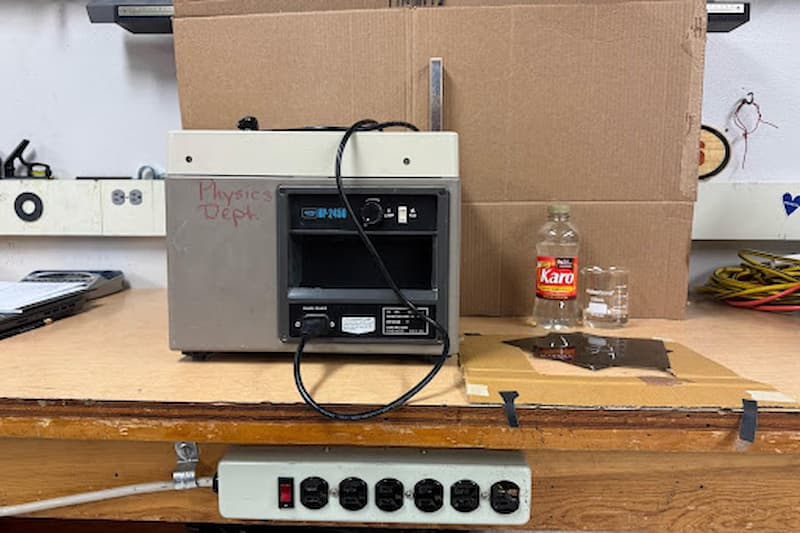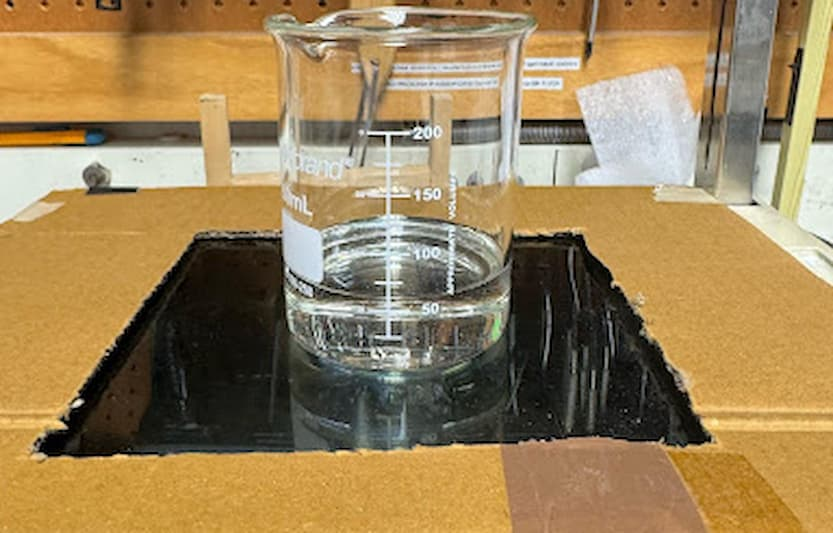Karo Syrup

PIRA: 6H30.40
Overview:
The physics behind the circular polarization in the corn syrup demo stems from a phenomenon known as optical activity, specifically optical rotation. When unpolarized white light passes through a linear polarizer, it becomes linearly polarized—its electric field oscillating in a single plane. Corn syrup, which contains chiral sugar molecules (asymmetric and non-superimposable on their mirror images), is an optically active substance. As the polarized light travels through the syrup, these molecules rotate its plane of polarization. Crucially, the rotation depends on the light’s wavelength (color) and the path length (depth) through the syrup. Since white light contains all visible wavelengths, each color experiences a slightly different rotation. When this light exits the corn syrup and encounters a second linear polarizer (the "analyzer"), only components aligned with the analyzer’s polarization axis pass through. Rotating the analyzer brings different wavelengths into alignment, producing the vivid, shifting spectrum seen in the demo. This clearly illustrates how light’s interaction with chiral molecules results in wavelength-dependent polarization rotation and, consequently, color separation.
Materials:
Two polarized plastic sheets, 250 mL beaker, overhead projector, and mask for the projector.

Setup:
Pour karo syrup into beaker until about 4 cm deep. Place one of the polarized sheets on the projector surface, as well as the mask; making sure the sheet is blocking all light not blocked by the mask. Place the beaker fill with the karo syrup on top of the polarized sheet. Leave the second sheet to the side for the person that is doing the demonstration.

How to:
Turn the projector on, and place the second sheet over the top of the beaker. As one rotates the second polarized sheet the color of the syrup will change color.
Safety:
1) Do not look directly into the light of the projector.
2) The bulb does get hot so be careful.
